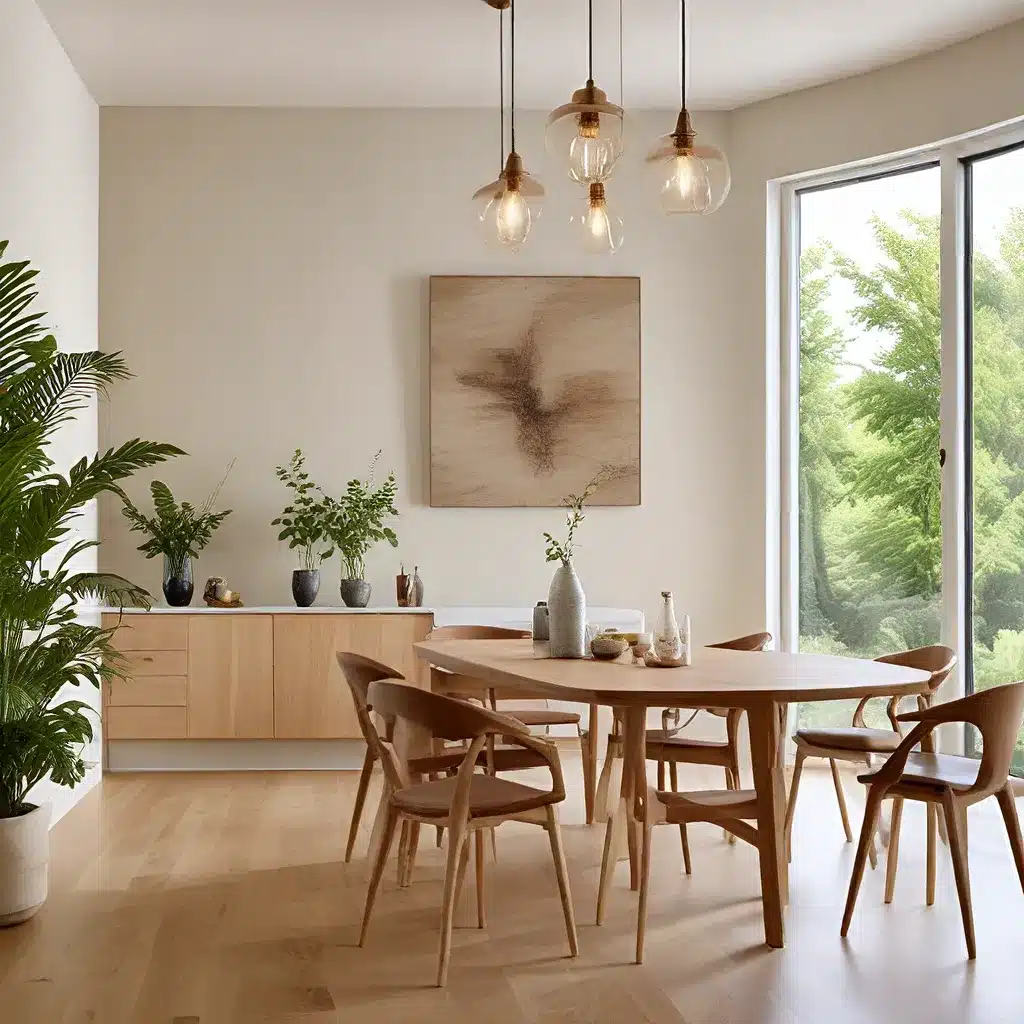
Embracing Sustainable Design Principles
In a world where environmental consciousness is increasingly paramount, the demand for sustainable design has become a driving force in the interior design industry. Homeowners and design enthusiasts alike are seeking ways to create beautiful, functional spaces that also prioritize eco-friendly practices and long-lasting aesthetics.
One of the key principles of sustainable design is to use only the necessary amount of resources, a philosophy that aligns perfectly with the pursuit of a timeless and elegant interior. By thoughtfully selecting materials, incorporating energy-efficient elements, and focusing on longevity, designers can craft spaces that are not only visually stunning but also environmentally responsible.
Sustainable Materials and Finishes
At the heart of eco-friendly interior design lies the careful selection of materials. Homeowners should prioritize natural, renewable, and recyclable options that have a low environmental impact. Some popular sustainable materials include:
- Bamboo: A fast-growing grass that is often used for flooring, furniture, and decor. Bamboo is a highly renewable resource and requires minimal water and pesticides to cultivate.
- Reclaimed Wood: Salvaged from old structures, reclaimed wood brings a unique, vintage charm while reducing waste and preserving natural resources.
- Cork: A renewable, biodegradable, and recyclable material that can be used for flooring, wall coverings, and insulation.
- Linen: A durable, breathable, and biodegradable fabric made from the flax plant, which requires fewer pesticides and less water than cotton.
- Wool: A naturally occurring, renewable, and biodegradable fiber that is often used for textiles and upholstery.
When it comes to finishes, opt for low-VOC (volatile organic compound) paints, stains, and sealers that emit fewer harmful chemicals into the environment. Additionally, consider exploring natural and mineral-based paints, which can provide a beautiful, eco-friendly alternative to traditional options.
Designing for Longevity
One of the hallmarks of sustainable design is the focus on longevity. By creating spaces that are built to last, both in terms of functionality and aesthetic appeal, homeowners can reduce the need for frequent replacements and minimize their environmental impact.
Urban Grace Interiors Inc. emphasizes the importance of timeless design in their approach to interior decor. “When you invest in quality, well-designed pieces, you’re not only creating a space that is visually stunning, but you’re also making a sustainable choice,” explains the firm’s lead designer. “These classic and durable elements will continue to enhance your home for years to come, reducing the need for constant updates or replacements.”
Incorporating Multifunctional and Adaptable Elements
Another key aspect of sustainable design is the inclusion of multifunctional and adaptable elements. By designing furniture, storage solutions, and architectural features that can serve multiple purposes, homeowners can optimize their living spaces and reduce the overall need for additional resources.
For example, a convertible sofa that can transform into a guest bed, or a modular shelving system that can be rearranged to suit changing needs, allow homeowners to personalize their spaces while minimizing waste. Versatile and adaptable design solutions can also make it easier for homeowners to update their interiors without the need for major renovations, further contributing to the longevity of their spaces.
Embracing Natural Light and Energy Efficiency
Sustainable design also involves thoughtful consideration of a space’s energy efficiency and natural lighting. By maximizing the use of natural light, homeowners can reduce their reliance on artificial lighting, which in turn lowers energy consumption and utility costs.
Strategies for harnessing natural light include:
- Strategically placed windows: Positioning windows to capture the most sunlight throughout the day can help minimize the need for electric lighting.
- Skylights: Introducing skylights can flood a space with natural illumination, creating a bright and airy ambiance.
- Light-colored finishes: Reflecting natural light with pale walls, floors, and furnishings can enhance the overall brightness of a room.
Additionally, incorporating energy-efficient features, such as LED lighting, smart home technologies, and high-performance insulation, can further optimize a home’s sustainability and reduce its environmental impact.
Integrating Greenery and Biophilic Design
The integration of greenery and biophilic design principles is another crucial aspect of sustainable interior design. Bringing nature indoors not only enhances the aesthetic appeal of a space but also provides mental and physical health benefits for the occupants.
Strategies for incorporating biophilic design include:
- Indoor plants: Carefully selected houseplants can purify the air, improve mood, and contribute to a calming and rejuvenating atmosphere.
- Living walls: Vertical gardens or “living walls” are a visually striking way to integrate lush, verdant elements into a space.
- Natural materials: Incorporating natural textures and materials, such as wood, stone, and natural fibers, can evoke a connection to nature.
- Outdoor views: Positioning furnishings to take advantage of scenic vistas and natural landscapes can foster a harmonious relationship between the interior and exterior environments.
By embracing these biophilic design principles, homeowners can create healthy, restorative, and visually appealing spaces that align with the values of sustainable living.
Conclusion: Balancing Aesthetics and Sustainability
Ultimately, the sustainable design approach is about striking a balance between aesthetic and environmental considerations. By thoughtfully selecting materials, optimizing energy efficiency, and integrating natural and adaptable elements, homeowners can create interior spaces that are not only beautiful and functional but also eco-friendly and long-lasting.
As the demand for sustainable living continues to grow, the interior design industry is at the forefront of this movement, offering innovative solutions and timeless design concepts that cater to the needs of environmentally conscious homeowners. By embracing the principles of eco-friendly elegance, homeowners can cultivate living spaces that reflect their values and contribute to a more sustainable future.

